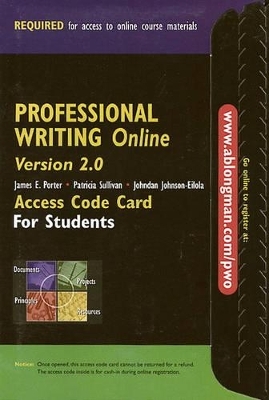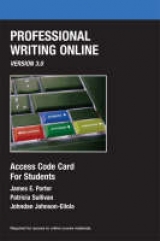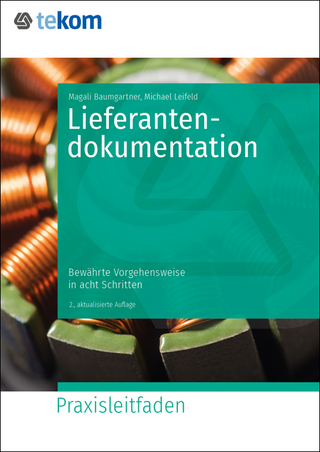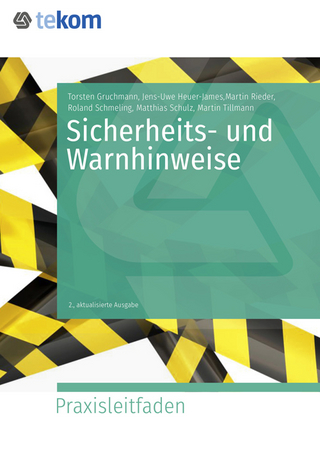
Professional Writing Online, Version 2.0
Longman Inc
978-0-321-16015-7 (ISBN)
- Titel erscheint in neuer Auflage
- Artikel merken
The flexibility the Web provides important advantages as a teaching tool over conventional textbooks, and is completely autonomous.
Professional Writing Online offers four primary points of entry, which correspond to the four major sections of the site: Projects, Documents, Principles, and Resources. The Projects section provides extended case studies and shorter exercises for use inside and outside the classroom. The Documents section provides a wealth of real-world examples of a variety of document types. The Principles section offers description and guidance on the topics that are integral to an applied writing course. The Resources section provides teachers and students with additional materials that will be useful in the teaching and practicing of writing on the job. These sections are interlinked so students can move back and forth among the sections to find what they need in focusing on a particular topic.
Overall, Professional Writing Online provides far more material than a conventional textbook and provides additional links to an abundance of related material on the World Wide Web.
I. PROJECTS.
Air Bag Case.
Allied Mutual Insurance Case.
Analysis and Revision of Workplace Document.
Analysis of Professional Contexts.
Analysis of Writing Practices.
Big 1 Case.
Computing in Your Profession.
Copyshop Simulation.
Critical Web Site.
Deus, Inc.
Documentation.
E-Commerce Simulation.
E-Commerce Report.
Employment Search.
Evaluating the Design of Online Documentation.
Industrial Design: The Elevator Buttons.
Job Banks Simulation.
Lester Crane Case.
NCAA Bat Standards.
National Electric Simulation.
Online Documentation for MOOs.
Proposal Project.
Relationship Between Law and Science/Technology.
Software Bug Case.
Software Learning Initiative.
Technical Presentations to High School Seniors.
Technology Access.
The Design of Public Information Exercise.
The Poly Chemical Risk Assessment Case.
TouchView.
United Drill Simulation.
Web Resources Project.
Understanding Copyright and Design on the Web.
Revising Employee Performance Procedures.
Usability Project.
Evaluating Clip Art for the Web.
Planning for Emergencies.
Writing Proposals for Non-Profits.
Business Letter: Telling the Reader the Bad News.
Job Search Case.
Employment Documents Project.
Corporate Web Site Simulation.
II. PRINCIPLES.
Overview: The Rhetorical Theory of Professional Writing Online.
Understanding Purpose.
The Complex Nature of Writing.
Evaluating Writing.
Technology and Writing/Work in the 21st Century.
Collaboration and Team Writing.
Types of Documents (Genres).
Terminology: What is Professional Writing?
The Importance of Technical Communication to Engineers.
The Importance of Business Communication in Managerial Work.
Understanding Readers.
What Readers Read.
How Readers Read.
Classifying Readers.
Understanding an Audience.
Social and Cultural Issues.
Ethics and Professional Communication.
Basic Principles of Ethics.
Ethical Guidelines for Teamwork and Project Management.
Copyright, Plagiarism, and Fair Use of Others' Writing.
Gender Difference in the Workplace.
Avoid Gender Stereotyping.
Avoid Sexist (and Other Insensitive) Language.
International Communication.
Intercultural Communications as a Rhetorical Issue.
Surface-Level Text.
Images in Culture.
Plagiarism.
Intellectual Property Overview: Ethics and Law.
Some Sample Campus Plagiarism Policies.
Documenting Your Work in Teams: Teamwork Logs and Lab Notebooks.
Shaping Texts.
Shaping Texts for Readers.
Markers for Readers.
Using ISIS as a Tool for Inspecting Text.
Style, Audience, and the Arrangement of Information.
Analyzing Workplace Writing.
Analyzing Workplace Writing Situations.
Representing the Writing Situation Visually.
Writing lists, trees, and research questions.
Making matrices.
Flowcharting.
Drawing maps.
Brainstorming.
Building Arguments.
Overview.
Types of Arguments.
Managing Information.
Structures for Information.
Constructing Visuals; Graphics.
Meeting Standards/ Writing Specifications.
Opening Statements.
Managing Projects.
Overview.
Collaboration and Team Writing.
Selecting a Team Work Structure.
Drafting and Revising Large-Scale Projects.
Team Work Log.
Versioning Documents.
Organizing File and Directory Structures.
Troubleshooting Team Problems.
Arranging Information.
Style, Audience, and the Arrangement of Information.
Thinking About Document Design.
Ordering Information for Understanding.
Constructing Visuals.
Designing with Color.
Using Citation Formats.
Research.
Why Writers Need to Find and Use Information.
Methodology and Design.
Finding Sources that Already Exist: Library and Web Resources.
Finding Sources that Already Exist: Library and Web Resources.
Search Tools in the Library.
Search Tools on the World Wide Web.
Searching for Printed Sources.
Searching Processes for Web Sources.
What Makes a Print Source a Good Source.
What Makes a Web Source a Good Source.
Gathering and Analyzing New Information: Field Research.
Planning Informal Field Research.
Informal Data Collection Techniques.
Interviews.
Designing Questionnaires.
Making Informal Observations.
Analyzing Data from Informal Field Research.
Presenting Informal Research Findings.
Informal Usability Testing.
Writing Reports.
Overview.
Reporting in the Process of Work.
Structured Writing.
Types of Reports.
Developing Documents Across Technical Investigations.
Designing and Writing Instructions.
Writing Online.
Writing at the Computer.
Similarities and Differences Between Print and Screen.
Some General Guidelines for Resumé Design.
Report Design.
Oral Report Visuals.
Designing Online Documents.
Why Do You Want to Create a Web Site?
Using a Site Map: Planning a Web Design.
Developing a System for Working on Web Sites.
Writing the Information for a Web Site.
Steps in Construction of a Web Page.
Web Site Structure.
Naming and Managing Web-Based Files.
The Basics of Linking.
Signaling Readers of Online Texts.
Visual Design on the Web.
Maintaining a Web Site.
Oral Presentations.
Informal Oral Presentations.
Tips for Giving Oral Presentations.
Making Web Presentations and Online Reports.
Types of Oral Presentations.
Usability Testing.
Overview.
Methods for Testing Documents.
Setting up a User Test.
Charting User Interactions with a Document.
Charting User Interactions with a Product.
Aids from a Guide for Informal Usabilty Testing.
Style and Editing.
Overview.
Types of Revising and Editing.
Style, Audience, and the Arrangement of Information.
Style: Citing Research Sources.
Correcting Style Problems.
Talking Heads.
Professional Look and Feel.
Proofreading.
Document Principles.
III. DOCUMENTS.
Introduction.
Memos and E-mail.
Letters.
Reports.
Policy, Manuals, and Handbooks.
Employment Documents.
Promotional Materials.
Instructional Documents.
Oral Presentations.
Proposals.
IV. Resources.
Search Engines.
Searching for Information.
Pointers to Other Internet Resources.
Information Clearinghouse.
Corporate Web Sites.
Web Design Resources.
Graphics and Visuals.
Online Documentation.
Internet Use Statistics.
Usability Resources.
Design Tips and Templates.
Professional Writing.
Citing Sources.
Job and Career Resources.
Professional Writing Programs.
V. INSTRUCTOR RESOURCES.
News and Announcements.
How to Use Professional Writing Online.
Recursive Processes and Complex Situations.
The Four Main Sections of Professional Writing Online.
The Project-Oriented Approach.
Some Scenarios of Use.
Sample Instructional Module.
Community and Interactivity.
Project Notes.
Syllabuses.
Contributions.
| Erscheint lt. Verlag | 19.8.2003 |
|---|---|
| Verlagsort | New Jersey |
| Sprache | englisch |
| Maße | 140 x 216 mm |
| Gewicht | 1000 g |
| Themenwelt | Geisteswissenschaften ► Sprach- / Literaturwissenschaft ► Literaturwissenschaft |
| Geisteswissenschaften ► Sprach- / Literaturwissenschaft ► Sprachwissenschaft | |
| ISBN-10 | 0-321-16015-0 / 0321160150 |
| ISBN-13 | 978-0-321-16015-7 / 9780321160157 |
| Zustand | Neuware |
| Haben Sie eine Frage zum Produkt? |
aus dem Bereich



